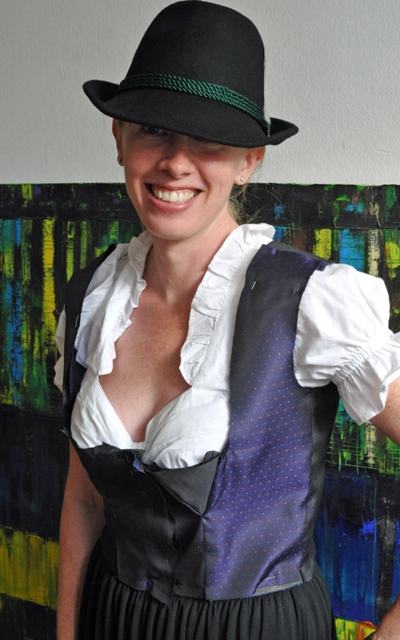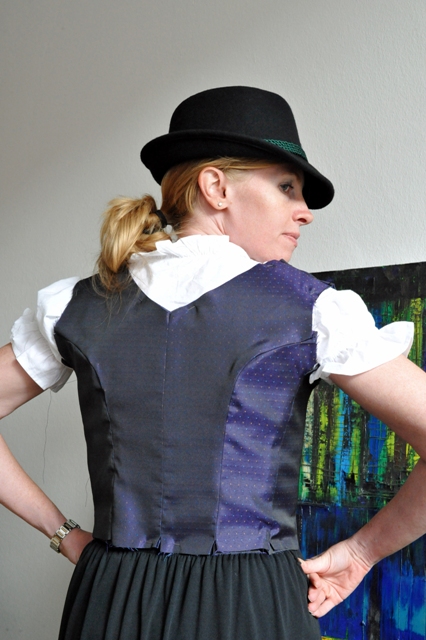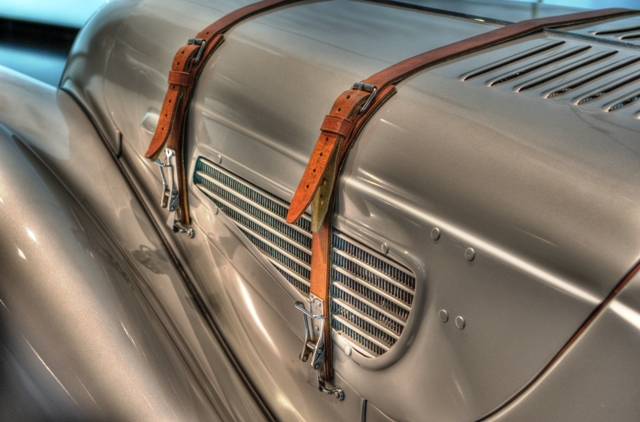In August, construction workers start erecting the huge tents and rides on Munich's "Wiesn" -- the first reminder that Oktoberfest is coming soon! However, before late September gets here, Dachau holds its traditional Volksfest. Some people say it's a mid-August warm-up for the big event a month later...
Dachau lies just to Munich's northwest. I've added some recent Schnitzelbahn destinations for reference:

Dachau sits at the end of the S2 (commuter train) line, an easy 30 minute ride from the center of Munich.
Most visitors think of the concentration camp and museum when they hear the word "Dachau" -- but it also has a charming old town & church, castle, and lots of green spaces. Last year we saw a classical concert in the castle.
The Volksfest is basically like a smaller, less hectic Oktoberfest. It's a great way to spend a summer afternoon or evening eating, drinking, riding rides, and playing games (plus it's another excuse to wear your trachten). Here's some views from the top of the ferris wheel. First, looking down at a beer tent, town in the background:


And the "Octopus" ride (second photo above) - a classic spinning carnival ride. Great techno music pumping too.
You see everyone below in their dirndl's & lederhosen (except the far right - Americans? White tennis shoes...).

There are two main tents plus a few smaller "gardens" serving weißbier, cocktails, and of course festbier. The festival's 350 year history is older than Oktoberfest (sorry, link in German but video is fun). The festbier comes from a local brewer (not one of Munich's big 6) and costs 4.90, whereas a mass at Oktoberfest will run 9 euros!

One of the smaller "tents" (pictured below) has a specific niche - strudl! (We didn't have a chance to try it.)

The larger bier tents are decorated much like the ones at Oktoberfest. the blue & white pattern come from the Bavarian crest /and flag), and the green wreaths are also traditional and a common color for trachten.

The outside of the large tents are also decorated in a manner like the tents at Oktoberfest (photo below).

Due to the fantastic weather, the smaller biergartens were the most crowded. The cold festbier was good.

The tent's band warms up to begin the entertainment, after fueling up with some beer themselves.

It was VERY hot that afternoon -- finally, Germany gets some of the Summer heat that the U.S. experienced.
To stay cool, we decided to take the classic "log ride" and saw this furry fellow at the entrance. Frau A said hello:

This dog was in the perfect place to stay cool. The woman in the ticket booth would throw water at him and he would try to catch it. Otherwise he would just hang out and greet riders. (Why the "Welcome" in English?)
I think it's great, but for whatever reasons (legal?) could never see this happening in the U.S..

Also: how about Frau A's awesone dirndl!!!
The festival has the requisite kiddie rides too (colorful and cute)...

...plus carnival games. Below, Frau A is throwing a ball to try and knock down a stack of cans. Classic!

I took my turn as well, sporting short lederhosen and a country-style shirt (rather than blue & white):

Almost! I don't think I've even done this to 100%. Next time...

And this classic roll-a-ball-into-holes game pictured below. I'm terrible at it. Frau gave it a try though.


No luck, despite the good roll in the above photo. Someone else just had the magic touch that time.
The ol' balloon/darts game had some odd prizes....a stuffed Meerkat in heart boxer shorts???

My favorite? The shooting gallery. No prizes, just a jaeger's (hunter -- yes, like Jaegermeister) satisfaction of knocking over bottles, starting the player piano, spraying water, or making odd taxidermied animals dance.
It's a staple at all Munich-area fairs, just like the U.S..

Naturally the sledgehammer/strongman game was here too. Very popular with guys especially after a few beers:

And no festival would be complete without big food.
There's the spit-roasted ox ("ochs") on a bun, a speciality we saw at one of the large beer tents:

Frau A skipped the Ox and had Wiener schnitzel in another beer tent (she loved the seasoned fries they served):

I tried something new, Ludwig-Thoma-Braten, which is thick chunks of ham (with sauerkraut and knödel).

It must be repeated: the festbeer was quite good, and an unbelievable €4.90 per maß (roughly 1 liter).
That's the same price as 2010! For about half the price of Oktoberfest, it's a dark malty steal.


Outside of the tents are lots of other stalls, selling greek food, döner, and the usual carnival snacks.
We had to try a nutella crepe, of course. Want to help support them vs. the stupid lawsuit.

Overall, Dachauer Volksfest is a great prelude to Oktoberfest, and fun in it's own right. It's cheaper, less crazy, with a small-town feel. We're definitely planning to go again next year... let us know if you want to join!

 Wednesday, August 31, 2011 at 9:01
Wednesday, August 31, 2011 at 9:01 

 Frau A ...
Frau A ...  3 Comments
3 Comments  Fashion, Style, & Shopping tagged
Fashion, Style, & Shopping tagged  DIY (do it yourself),
DIY (do it yourself),  dirndl,
dirndl,  sewing,
sewing,  trachten ...
trachten ...  Print Article
Print Article  Email Article
Email Article 









































